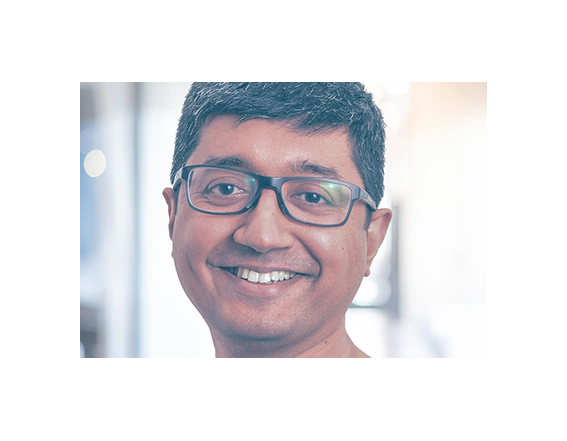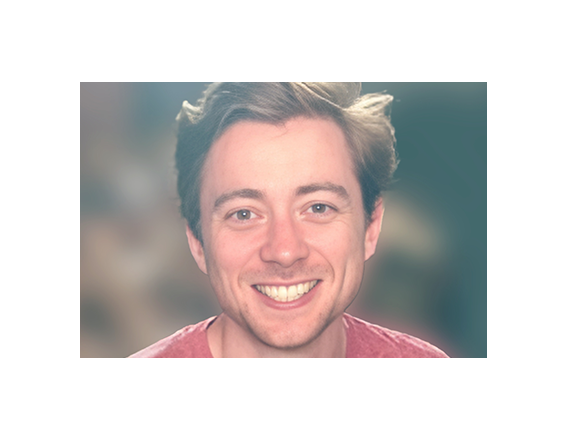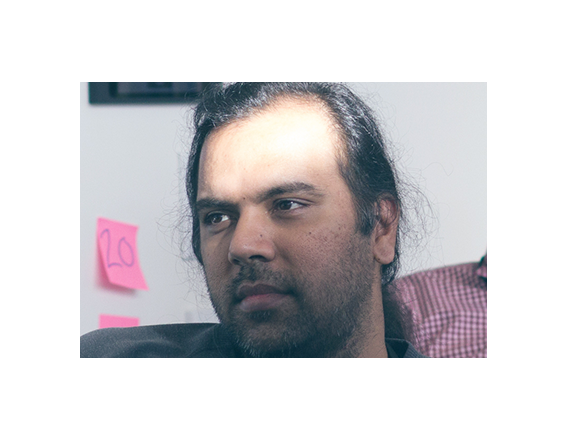Perspectives
Introduction: The great legacy reckoning
The pressure to modernize technology infrastructure and practices is constant, but recent events have made the task even more urgent.
The global IT outage of July 2024, triggered when a problematic update from security vendor CrowdStrike clashed with Microsoft’s widely-used software, dealt a blow to businesses worldwide, with estimates placing the damage to the Fortune 500 alone north of US$5 billion. The disruption proved especially problematic for firms with outdated legacy systems, such as airlines, which took longer to recover.
Even before this painful reminder of the need to boost resiliency, most systems were facing customer and market demands that differ vastly from the time they were built. “When you move beyond the boundaries of what was originally expected of a system, its ability to keep up with the pace of change comes into question,” says Ashok Subramanian, Head of Technology, Europe at Thoughtworks. “Challenges start to appear in terms of changes not happening fast enough, quality not being good enough, or customer experience failures.”

“When you move beyond the boundaries of what was originally expected of a system, its ability to keep up with the pace of change comes into question.”
Ashok Subramanian
Head of Technology, Europe, Thoughtworks
Those failures are happening in part because customer demands are changing. “In the past, people didn’t expect access to systems 24/7, and not all systems were connected,” Subramanian says. “But today, organizations don't operate on an island - they operate in an ecosystem. In that ecosystem, you have to exchange data, and it’s become increasingly apparent that the interchange points where those exchanges happen can become points of weakness.
Competitive realities are also forcing many firms to reinvent, says Shodhan Sheth, Global Head of Enterprise Modernization, Thoughtworks. “Businesses have been differentiating with technology for some time; now there are businesses that are differentiating with faster adoption of newer technology paradigms,” he explains. “If you can’t move fast and adopt new technology, your competition will adopt it faster and do something different, whether that’s a more interesting customer experience or better operational efficiency.”
These forces mean modernization has become a focus not only for CIOs, but also the rest of the C-suite, with research showing digital transformation and technology upgrades leading the list of priorities for both CEOs and CFOs this year.
CEOs eager to revitalize the tech estate


“Cost base is another driving factor for modernization,” says Tom Coggrave, Principal Consultant, Enterprise Modernization Platforms and Cloud at Thoughtworks. “CIOs are more responsible for that bottom line, and are seeing the maintenance of legacy systems as an ever-growing item on their balance sheet. They’re feeling the need to act, but the required business process transformation cuts right to the core of their technology estate.”
Another factor reshaping the landscape is cloud hyperscalers, often to the benefit of organizations that may have struggled with modernization in the past, Coggrave notes. As cloud vendors recognize companies are being held back and develop more services and products to address their pain points, “it’s reduced the bar in terms of getting started,” he says. “But there are still a lot of pitfalls on the path to be aware of.”
i. Modernization misconceptions
One of those pitfalls is that even the term ‘modernization’ can be misleading. “Modernization doesn’t always equal moving to the latest and greatest technology,” says Subramanian. “There are a lot of systems that have been running for 30-40 years that still manage to do the things they were designed to do.”

“Modernization doesn’t always equal moving to the latest and greatest technology,”
Ashok Subramanian
Head of Technology, Europe, Thoughtworks
Shodhan adds: “It doesn’t matter whether you have a 40 year old mainframe or cloud native microservices architecture – if it’s not doing the job for you, then you need to change. The only thing to ask is: Are your systems fit for purpose?"
The risks associated with modernization, and mainframe modernization projects in particular, are relatively high. In one study, 86% of firms surveyed reported attempting mainframe modernization in the past – but only 22% said they had been successful.
This is why Thoughtworks’ message to customers is: “Don’t do it all in one go,” says Coggrave. “Our DNA is to make everything incremental and iterative, and to try and drive value out of every chunk of work that we deliver. When efforts follow a big bang approach, the process tends to be too large with too many unknowns, leading to a quick loss of confidence and, very often, achieving nothing.”
“There are numerous examples of multi-million dollar IT transformation initiatives that don’t end up delivering value,” says Subramanian. “The challenge with wholesale replacement is there's not a single person within an organization who has the entire picture of what the system does. In many cases, it’s not even a single system; you're talking about systems of systems. It’s too risky and expensive to tackle modernization in one step.”
Instead of a giant leap, Subramanian advises businesses to see modernization as a series of “continuous improvements you can put into place, such as introducing modern engineering practices into old systems, or redesigning parts of the old systems that have outlived the purpose that they were designed for.”
“Lots of organizations get stuck in analysis paralysis, trying to find the perfect way to kick off modernization programs,” says Shodhan. “But in our experience, just getting started with something is more important than waiting for the perfect thing to get started with."
“We advocate looking at everything, but breaking it down into smaller chunks where value can be released earlier, either through cost reduction, or new revenue opportunities realized, or a mix of both,” says Coggrave. “That provides a more compelling case to move forward. Business leaders start seeing the benefits and get payback earlier, and that builds momentum to push the program forwards.”
ii. Establishing alignment
Once modernization is underway, organizational alignment is needed to set it up for success. “Modernization tends to be focused on the technology backbone that supports a business, but inevitably, organizational changes will need to come along with that,” Coggrave notes.

“Modernization tends to be focused on the technology backbone that supports a business, but inevitably, organizational changes will need to come along with that.”
Tom Coggrave
Principal Consultant, Enterprise Modernization Platforms and Cloud, Thoughtworks
That means ensuring the program advances business goals. For CFOs and public companies, financial metrics may be a primary consideration, especially since modernization investments can affect the way expenditure appears on the balance sheet. Nonetheless, “this sort of a change needs to bring together stakeholders and subject matter experts from across the organization,” Subramanian points out. “It can’t just be led by business, or by technology. What might make sense from the financial point of view might have a different impact from a technology standpoint.”
“There has to be something that you tie back to that's important to the business,” says Coggrave. “For instance, if it’s important to a business to be able to deliver new products to market quickly, and they can't do that because the mainframe holds them back, we would prioritize the first slice of delivering some small part of a new product.”
“Ultimately, we’re trying to modernize to achieve a good balance of defensive benefits, like lowering costs or risks, and offensive benefits, like launching new offerings or increasing customer wallet share, which tend to be more important,” he adds. “Once you have clarity about what you're targeting, you can figure out the right metrics for those measures, and feed that into the prioritization conversation.”
A common issue is that some people will want to hold on to the systems that they’re familiar with, even if those are rife with accidental complexities because of historic or knowledge constraints. “Tackling complexity involves challenging existing power structures, so that accountability for change has to be in some ways not just championed, but demonstrated by the senior leadership,” says Subramanian.
Finding those champions requires modernization to demonstrate “a real line of sight to the business strategy and purpose,” says Shodhan. “Business involvement is absolutely necessary, and it's important to connect to various layers of strategies and goals, because when you can show how your modernization program is directly providing value to the organization, it's harder for people to question its lifespan.”
“You need to demonstrate a new way of doing things, a new way of organizing teams, and a new way of working with outcomes that people can point to and say: ‘This is why we need to do what we’re doing,’” Subramanian agrees. “Otherwise it's very theoretical. One of the challenges for organizations is trying to create value people can see.”
Though the stakes can be high, only genuine changes in the legacy system that are taken through to production will keep the program on track, and stakeholders on board.
“Proofs of concept definitely have a place, but can sometimes detract from the effort, because people come to believe change is only possible in a sandbox,” Subramanian explains. “The change in the system has to be something that goes live in front of real users, even if they’re internal. Even if it improves one small thing, like removing a step to make it easier for customer service people to find a piece of information, that’s key to building confidence and demonstrating positive outcomes.”
iii. Getting to know your systems
Modernization also depends on developing a deep understanding of the complexities and dependencies of legacy architecture.
Thoughtworks experts note this is often even harder than it sounds. Holistic assessments of systems are sometimes hampered by a lack of access to the people who understand their various parts. “You've got people who can understand some of the functional or business characteristics of the systems, then people who've actually written the code,” says Subramanian. “In some cases, large parts of the application are handed over to a third party or vendor who might own different parts of it. Fragmentation of information and knowledge is a key challenge.”
“There’s a big issue with not knowing where to start disentangling these balls of mud, to carve out a section that you can take through to the finish,” agrees Coggrave. “Actually shaping the program is one of the main challenges, which is why a lot of big bang programs fail.”
“Systems are very tangled internally,” says Shodhan. “Like spaghetti, if you pull on one strand, a lot of others come with it, and you can't always afford that large an increment in modernization. We try to find a seam to pull out one small increment that's worthwhile, to serve as that first step.”

“Systems are very tangled internally. Like spaghetti, if you pull on one strand, a lot of others come with it."
Shodhan Sheth
Global Head of Enterprise Modernization, Thoughtworks
Sometimes the question of where to start may be crystal clear – for example, if a financial institution needs to comply with a regulatory change by a certain date.
“In that case, there's a clear business need and driver,” Subramanian says. “There's an application you can target where you know that you need to make a change, and can almost conduct an x-ray into the system to be able to say: How big is the change likely to be? What are the impacts and side effects? That enables you to plan a lot better.”
If that kind of business driver isn’t visible, Subramanian advises organizations to look for “pain points or where things are continuously causing pressure.”
“The insights that we get into a system allow us to map it to specific business needs or pain points, potentially even revenue drivers, backed by data that we're deriving from the system,” he says. “That allows for a much higher degree of confidence in the timeline and the effort needed.”
“From a technology perspective, we need to identify which independent applications and programs are running, so that we can find seams between them to backfill and support the transitional architecture approach we need to go forward,” says Coggrave.
“The big question to the business is: What’s most important for you right now?” agrees Shodhan. “Is it delivering a lot of revenue, or addressing something that’s providing your customers a really poor experience? We force clients to choose and bias ourselves more towards that value. There are other factors like complexity and how much time that first step will take. We look at all these dimensions, and come up with a hypothesis that says if we start with a certain increment, it's going to deliver a decent result.”
Factors like risk tolerance can prove instrumental to how a modernization program proceeds, notes Coggrave. He cites the example of a recent Thoughtworks project for a national infrastructure provider, for which any amount of downtime was “impossible.”
That led Thoughtworks to prioritize building a complete, cross-functional solution that would meet the client’s elevated demands for performance. “If we were in a different situation where that wasn't as important, we might have said, let's get some momentum going and build a bit of the platform while developing a new product initially, so we can get revenue coming in the door and prove the value of modernization right away,” he says.
iv. Moving on from the mainframe
Regardless where they start and what’s prioritized, for most organizations the most delicate, and fraught, aspect of the modernization process is the effort to unpack the mainframe, the central hub on which many legacy systems rest.
“Everybody wants to get rid of the mainframe, but nobody really wants to take the first step to try,” says Subramanian. “It’s unique even among legacy systems, and probably one of the hardest challenges to tackle, partially because at most institutions, all systems ultimately lead back to it.”
Mainframe modernization: The before and after


“A lot of mainframes have been around longer than I’ve been alive, and run on a combination of customized packages and custom code, because back in the day, off-the-shelf options didn’t exist,” says Coggrave. “The biggest issue is that the people that worked on the system or wrote that code may not even be in the industry anymore, and the workforce that can handle that kind of legacy modernization is diminished.”
Despite the difficulty, Shodhan urges businesses not to feel overwhelmed. “What I tell our customers is: I know you're getting scared because you see 50 million lines of code you have to deal with, but that doesn't mean your new system will be the same,” he explains. “It will probably end up being closer to 5 or 10 million lines of code, because there'll be a lot of stuff in there that you no longer need. Engineering practices have changed, and there’s a lot more you can offload. You might still have to pay for software as a service, but it changes your total cost of ownership, because there's less code you need to own and worry about.”
Mainframe modernization is delicate because it can require companies to do two things simultaneously. Adopting an incremental approach to modernization means “you go through a transitional period where some things are running off the mainframe and some things are running on the mainframe,” Coggrave explains. “People stumble when they haven’t thought about how to handle operating two worlds, keeping both working properly for an extended period of time.”
“When you're modernizing technology, one of the big questions is how you manage the old and new, sometimes at the same time,” adds Subramanian. “That can include things like budgeting, managing people and distributing work. Ultimately, it’s also about peoples’ growth and development, because if someone is just working on the old systems, that will have a lot of implications for capabilities and motivation.”

“When you're modernizing technology, one of the big questions is how you manage the old and new, sometimes at the same time.”
Ashok Subramanian
Head of Technology, Europe, Thoughtworks
Morale can also suffer when those who know the legacy systems best – the former ‘superheroes’ who effectively kept the business running – consider the impact of modernization on their roles.
“We’ve definitely encountered concerns from people who feel like their jobs are being threatened,” says Shodhan. “In response, we focus on pairing techniques. We reassure them by explaining: ‘You have valuable systems and domain experience from working on the old system; we bring modern engineering experience. Let's work together on this new system. And as a side benefit, you can get upskilled in modern engineering practices.’”
Coggrave notes that simply increasing the number of teams needed to support a modernization initiative can be challenging from the program management and governance perspectives.
“We design teams so that they reflect the architecture, to produce what’s envisaged more easily and have work flow more smoothly,” he explains. “That also means putting the right people into those teams so that they have the information needed to proceed as independently as possible, without many dependencies, because that's what commonly kills large programs of change. Things go very slowly when you have one team waiting for another to create the database, and another waiting for someone else to configure it.”
In general, however, Thoughtworks’ experience shows teams working on a carefully structured program with clear progress indicators tend to pull together and see it through.
“Internal employee surveys can help show whether people are feeling empowered or that what they’re doing is having an impact,” says Subramanian. “If people feel they’re making real change, they will go beyond what they have to do as part of the job to make a difference to the organization.”
Subramanian also advises organizations to create some space for teams to act flexibly, and even fail.
“There needs to be a safety net for people to be able to learn, make mistakes, and then evolve to something that makes sense for the organization,” he says. “The only way to do that is to create extra slack within the system. And sometimes the only way to create slack is to seek the help of experts.”
v. Taking advantage of new tools
New tools also have the potential to enhance efficiency and give organizations more room for maneuver in modernization programs. AI has been overhyped in many contexts – but legacy modernization is one area where Thoughtworks’ experience shows it can actually deliver solutions for specific problems.
While much industry focus is on AI’s ability to support coding, Thoughtworks experts see even greater potential in using AI to understand the complexities and dependencies of legacy systems, particularly mainframes. To this end, the company has developed an AI-based accelerator, CodeConcise, for precisely this purpose.
Making the most of AI in the modernization process


Source: Thoughtworks
“You need labels that are well understood to describe what a system is doing, and with mainframe programs, it might take three months just to achieve a first version of that,” Shodhan explains. “With automated capability detection, we can ask the LLM what a piece of code is doing, it will give us an answer. Then we can start grouping similar functionalities together. In legacy systems, that's very powerful, because similar functionalities exist in very different parts of the code. 50 million lines of code is probably not what you actually need, because there's a lot of duplication in there – but it’s not always easy to detect. The solution can highlight where the duplications and connections are, and help improve the design of your system.”

"The solution can highlight where the duplications and connections are, and help improve the design of your system.”
Shodhan Sheth
Global Head of Enterprise Modernization, Thoughtworks
The impact of this tool has already proven transformative for several Thoughtworks clients. Coggrave cites the example of an automotive manufacturer that had launched an effort to shift its complex architecture to the cloud, but was struggling to translate code into requirements that could be moved or rebuilt.
“We started with a proof of concept on a small part of the code, using CodeConcise to reduce the effort needed to get from code to current system requirements,” he says. “We were able to remove 8 person weeks of effort being spent to document each portion of legacy code, produce a report, then pass that through a couple of reviews to make it available for forward engineering. Scaling this to the client’s 15 million lines of code, this represents a huge savings, in the order of 60,000 person days of effort.”
Similar results were achieved with a client where CodeConcise was deployed to accelerate defect resolution. “When you want to implement something new or fix a bug, you need to know how the system works, to really navigate it and find the places where a fix is needed,” says Shodhan. “Optimistically, it can take around three months for developers to start becoming familiar with legacy systems. We introduced a new Thoughtworks pair to the client teams equipped with CodeConcise. In the best cases, our pair could find a fix in three hours for an issue that previously took three weeks to resolve.”
“The basic premise of modern software engineering is the ability to change software at pace with confidence, and to know that if something breaks, you have that golden safety net,” Subramanian says. “Usually, in a legacy system, the safety net is provided by a separate team that goes through a long testing cycle. Automating those tests is one area where the potential tooling of products around GenAI can come into play, to accelerate that development-testing feedback loop.”
Subramanian also sees significant potential for GenAI to enable smoother translations of regulation into software features, and accelerate the validation process, simply by reducing the need for teams to digest or generate documentation. “We’re trying to look beyond areas like just helping you type faster as a programmer, to those that actually have value,” he says.

“We’re trying to look beyond areas like just helping you type faster as a programmer, to those that actually have value.”
Ashok Subramanian
Head of Technology, Europe, Thoughtworks
vi. A modernization state of mind
With developments like GenAI introducing so much change, Thoughtworks experts underline the need to see modernization as a continuous process, and come to terms with the fact that the direction and priorities of a modernization program may sometimes have to shift.
Coggrave recalls a recent conversation with one customer who had put a mainframe modernization program on hold to expand the priorities beyond cost reduction, to higher-value results like revenue opportunities. “That shows how a program can evolve when it’s not just from technology and not all about tech change, but business-led,” he says. “The outcomes are likely to be more positive and meaningful.”
“The organization will never not need to adapt; we live in a state of change,” Shodhan says. “You also have to work with constraints. It's not as if the organization can afford to launch large modernization programs on a regular basis. That makes it imperative that you develop a different approach to how the organization works. Think of software ecosystems, which are always evolving.”

“The organization will never not need to adapt; we live in a state of change.”
Shodhan Sheth
Global Head of Enterprise Modernization, Thoughtworks
Often, evolving will mean adopting new tools and approaches that promise to make modernization less painful. “We’ve told our clients; it’s hard to define a blueprint for what your technology looks like over the next five to seven years,” says Coggrave. “If you’re developing seven data pipelines, by the time you've done four of them, there's going to be some new capability a cloud provider will bring out that makes it even easier. So we shouldn't lock ourselves in; blueprints need to be able to change quickly."
“Evolutionary architecture is one of the things that people need to be abreast of, because the rate of change in technology is ever-increasing,” he adds. “What’s most important is making sure that you have the validation and testing that sits around the system that makes technology more interchangeable, so whatever new technology you’re looking at can be absorbed in the future.”
Companies that have pursued an evolutionary and incremental path will generally be in a good position to manage and benefit from future change. “Breaking things down into smaller systems allows you to make experiments and look at the new technology out there more quickly, whereas if you have one huge, monolithic system that runs everything for you, introducing new data pipeline technology is near impossible, because it’s like changing the foundations of a building while it’s still standing,” says Coggrave.
Ultimately, according to Subramanian, “the best measure of modernization is resilience – how quickly can the organization adapt, and how quickly can the people within the organization adapt?”
“Success can be seen as the muscle memory of the organization itself developing, to expect a regular cadence of change, rather than deciding it’s reached an end-goal,” he says.

“Success can be seen as the muscle memory of the organization itself developing, to expect a regular cadence of change."
Ashok Subramanian
Head of Technology, Europe, Thoughtworks
Perspectives delivered to your inbox
Get timely business insights, expert analysis, and industry updates delivered to your inbox when you need them—no noise, just value.
















